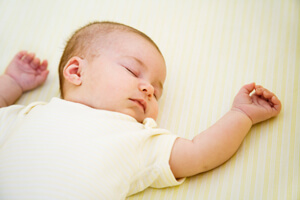American Academy of Pediatrics makes recommendations for infant safe sleeping
Pediatrician
CentraCare Clinic - Health Plaza Pediatrics
It was widely reported last month that the American Academy of Pediatrics (AAP) recommended infants to share their parents’ bedroom for at least the first six months — and preferably for the first year.
But this was just one of several recommendations for creating sleep safe environments for newborns. Some of the other recommendations were not as widely reported, but it’s just as important for these to be known by parents, grandparents and caregivers. Almost 3,500 infants die each year in the United States from sleep-related deaths including sudden infant death syndrome (SIDS), accidental suffocation and strangulation.
Parents should never place a baby alone or with a sleeping person on a sofa, a couch or cushioned chair. This risk of the baby falling or being suffocated is too great.
If you are feeding your baby and you think there’s a chance you could fall asleep, you should feed him or her on your bed and remove all pillows, sheets, blankets or anything else that could pose a danger. And if you do fall asleep, when you wake — the AAP encourages parents to move the baby to his or her separate sleeping space. Preferably a crib or bassinet in the parents’ bedroom.
Other AAP recommendations on creating a safe sleep environment include:
- Place the baby on his or her back on a firm sleep surface such as a crib or bassinet with a tight-fitting sheet.
- Avoid use of soft bedding, including crib bumpers, blankets, pillows and soft toys. The crib should be bare. New evidence shows that soft bedding continues to pose hazards to babies who are 4 months and older.
- Share a bedroom with parents, but not the same sleeping surface, preferably until the baby turns 1 but at least for the first six months. Room-sharing decreases the risk of SIDS by as much as 50 percent.
- Avoid baby’s exposure to smoke, alcohol and drugs.
The report also recommends skin-to-skin care immediately following birth for at least an hour as soon as the mother is medically stable and awake. Breastfeeding also is recommended as adding protection against SIDS.
Other recommendations include:
- Offer a pacifier at nap time and bedtime.
- Do not use home monitors or commercial devices, including wedges or positioners, marketed to reduce the risk of SIDS.
- Infants should receive all recommended vaccinations.
- Supervised, awake tummy time is recommended daily to facilitate development.
Learn more about the new AAP Safe Sleep Recommendations and Back to Sleep information from healthychildren.org.
